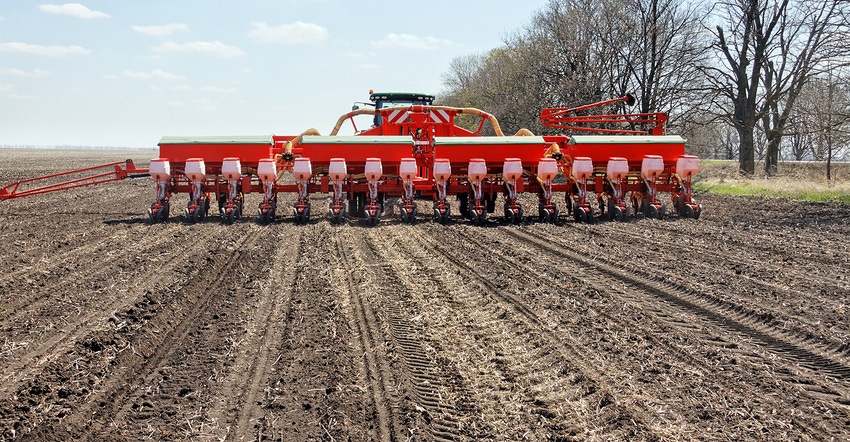April 3, 2018

By Kent Shannon
One item often overlooked when using variable-rate technology is the calibration of application equipment. Currently, no standard procedures exist for calibrating VRT. While calibration of spreaders, planters and sprayers is needed for uniform application, it is even more critical to calibrate VRT-controlled equipment.
In a few cases, traditional calibration procedures will work, but do not ensure proper operation over the expected range of varying application rates. The goal of calibration is to minimize application errors so target rates can be achieved with a certain level of confidence. The following suggestions cover how one should approach the calibration of equipment utilizing VRT.
VRT usually relies on either ground-speed radar (GSR)or a global positioning system (GPS) receiver as input for actual ground speed. If a GSR is used, yearly calibration of this sensor is important, so the variable-rate controller will properly adjust application rates with ground-speed variations. An improperly calibrated GSR will lead to application errors. Follow either equipment or GSR manufacturers’ recommendation for the proper calibration procedure.
Prior to calibration of equipment with VRT, one must determine the range of planned application rates for the product(s) to be used during a variable-rate application. This range will be used to ensure that the software and hardware setup will properly operate over the expected range of rates once an acceptable setup is determined during calibration. For example, one might decide to vary corn seeding rates from 24,000 to 36,000 seeds per acre. Knowing this information, select the median rate (30,000) to start calibrating the planter equipped with VRT.
Pre-calibration checks
Make sure all hardware and software are in proper operating condition. Replace any worn parts of hardware, especially those controlling metering and distribution of material.
For input rates to be varied over a wide range, especially for lime application. Check the distribution pattern at the median rate, followed by a check at the minimum and maximum application rates. This procedure will ensure proper distribution over the range of desired application rates. If a distribution issue exists, the rate variation should be limited to a smaller range.
Specific equipment checks include:
Granular or dry applicators. For spinner spreaders, this includes the divider, spinner disks and especially the spinner fins. For pneumatic applicators, check the metering mechanism, fan, tubes and deflectors. Worn tubes can have an impact on material transportation to the deflectors, while worn deflectors can affect distribution.
Sprayers. Select a nozzle that is able to handle the expected application rates, spray pattern, ground speed and pressure.
Planters. Check all drives and individual metering element(s) on each row unit.
Specific calibration considerations
Here are some tips to use when calibrating VRT equipment:
• Follow manufacturers’ recommendations.
• Calibrate annually.
• Watch for pattern shifts, especially for spinner spreaders.
• Dry product density. If the intentions are to use variable-rate blended products, then make sure the products have similar density and particle size. It is not advisable to blend products if these differences exist, because pattern uniformity will be greatly affected over the range of application rates. This issue is more important for spinner spreaders than pneumatic applicators. Perform individual distribution tests for different granular products, especially if they have different density and particle sizes. For example, potash will require a different calibration than lime.
• Sprayers. Take any pressure readings at the boom. Ensure nozzles are within 5% of the manufacturer’s operating specifications. If the spray mixture is significantly altered by the addition of adjuvants, it is recommended to compare the output mixed rate to water and ensure that the values are within 5%. If 5% is exceeded, calibration must be conducted using the spray mixture.
• Planters. Ensure proper seed drop and that the planter settings or configuration can cover the range of expected seeding rates.
Shannon is a natural resource engineer with University of Missouri Extension in Boone County.
You May Also Like




